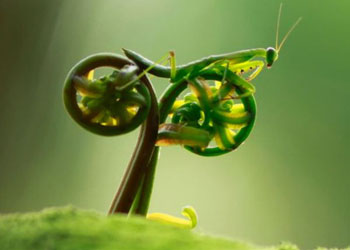 Studying ecological behavior in praying mantises.
Why do praying mantises display a unique mating system, called sexual cannibalism, where a member of a male-female pair kills and consumes the other during courtship or copulation? At the end of every summer, why do more than 100 million monarch butterflies sweep across North America to overwinter further south in California and Mexico? Animal behavior is the study of these and other questions about why animals behave the way they do.
Studying ecological behavior in praying mantises.
Why do praying mantises display a unique mating system, called sexual cannibalism, where a member of a male-female pair kills and consumes the other during courtship or copulation? At the end of every summer, why do more than 100 million monarch butterflies sweep across North America to overwinter further south in California and Mexico? Animal behavior is the study of these and other questions about why animals behave the way they do.
Scientists are drawn to the study of animal behavior for varied reasons and the field is extremely broad, ranging from research on feeding behavior and habitat selection to mating behavior and social organizations. Many scientists study animal behavior because it sheds light on human beings. Research on non-human primates, for instance, continues to offer valuable perspectives into the causes and evolution of individual, social, and reproductive human actions. Understanding why some animals help others at the potential cost of their own survival and reproduction, for example, not only gives us insight into their behavior but could also potentially help us to understand the underpinnings of our species’ ideas of altruism (the principle or practice of unselfish concern for or devotion to the welfare of others ) and sacrifice.
Other scientists are motivated by environmental concerns. When we gain insight into animal behavior, we are in a stronger position to understand vexing conservation problems, such as how to save endangered species, assess environmental quality, design nature preserves, and evaluate the importance of human-related threats to survival in otherwise fit animals.
Behavioral ecology is essential to solving critically important problems ranging from the conservation of endangered species to the control of emerging infectious disease. This chapter focuses on such questions and others in a quest to understand how behavior is related to genetics, environment, and evolution. Thus, the modern scientific discipline of behavioral ecology extends observations of animal behavior by studying how such behavior is controlled and how it develops, evolves, and contributes to survival and reproductive success.